Here's how the 'unlimited' plans from Verizon, AT&T, Sprint, and T-Mobile compare
The big caveat: No "unlimited" plan is really unlimited.

The other caveat: Not all networks are created equal.
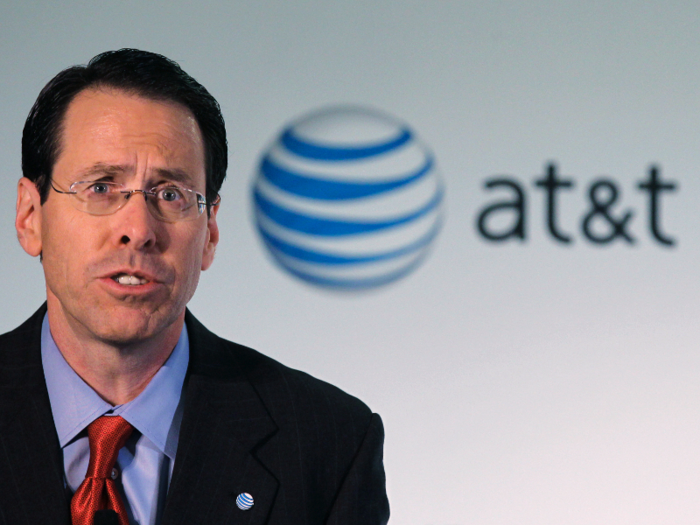
A good "unlimited" plan isn't as worthwhile if it comes with shoddy internet. Sadly, a big chunk of the country still suffers from mediocre mobile coverage.
It's hard to give exact metrics on how the carriers' current networks compare, but a recent PCMag report found Verizon to have to best mix of speed, coverage and reliability, with T-Mobile and AT&T close behind. A recent RootMetrics study, meanwhile, found a bigger gap T-Mobile to be fast but less reliable, and also put Verizon tops in terms of overall quality.
In general, Verizon is consistently near the top, T-Mobile is said to be much improved from years past, AT&T is either in second or third, and Sprint often brings up the rear. Much of the time, though, which is best for you depends on where you live.
If you opt for a prepaid carrier, you usually have to deal with slower speeds. Cricket Wireless has an unlimited plan for $65 a month, for example, but its parent, AT&T, caps Cricket download speeds at a lower-than-average 8 Mbps.
Sprint, meanwhile, caps all video on Virgin Mobile's and Boost Mobile's unlimited plans at a less-than-HD resolution. Virgin did recently introduce an enticing deal that offers a year's worth of data for $1, but you need to use an iPhone to be eligible for it.
And the prepaid "unlimited" plans from carriers like Verizon and T-Mobile block things like HD video streaming and the ability to use your phone as a mobile hotspot. As a result, we've omitted all such prepaid plans from this comparison.
Verizon
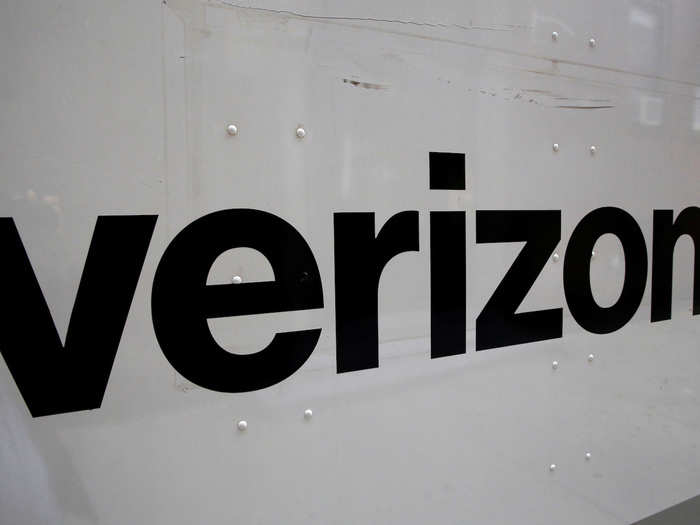
How much does it cost?
Verizon's recent overhaul has turned what was one of our preferred plans into two new options of questionable value. Verizon calls the new plans “Go Unlimited” and “Beyond Unlimited."
The Go Unlimited plan starts at $75 a month for one line. It costs $130 a month for two lines, $150 a month for three lines, or $160 a month for four lines. You can then add up to six more lines, each one priced at an additional $40 each month. It maxes out at $400 a month for 10 lines.
The Beyond Unlimited plan starts at $85 a month for one line. It costs $160 a month for two lines, $180 a month for three lines, or $200 a month for four lines. Each additional line here costs an extra $50 a month, with a maximum of 10 lines for $500 a month.
By comparison, Verizon’s previous unlimited plan started at $80 a month for one line, $140 a month for two lines, $160 a month for three lines, and $180 a month for four lines. Those who subscribed to that plan prior to Verizon’s recent changes get to keep those prices.
None of this includes taxes and regulatory fees, though. Those vary by region, so your bill will be a bit higher than what's advertised.
And as with every major unlimited plan, all of these rates apply only if you set your billing to auto-pay every month. Otherwise, all of the prices above will cost $5 more a month per line.
How much LTE data do you actually get?
With the pricier Beyond Unlimited plan, Verizon says it may temporarily slow your mobile data speeds in areas of congestion if you use more than 22 GB of LTE data in a given month. This was the case with Verizon’s previous unlimited plan as well.
With the Go Unlimited plan, however, Verizon says it may temporarily slow your mobile data speeds in areas of congestion at any point. This doesn’t mean you’ll constantly be slowed to a crawl when browsing the web on your phone, but it makes it especially difficult to call this a true “unlimited” plan.
Can you stream HD video?
Not with a smartphone on the Go Unlimited plan. If you buy that, Verizon says video streamed over its mobile network will max out at a 480p resolution, which is less than high-definition. There is a visible difference in sharpness between 480p and HD, particularly on the ever-expanding and increasingly high-res displays of today’s smartphones. Again, this is a clear example of limits on an “unlimited” plan.
The Beyond Unlimited plan does let you stream video on smartphones in high-definition, but even that is throttled: Verizon says it’s capped at a 720p resolution. This isn’t as noticeable a drop-off in sharpness as going to 480p, but it’s the minimum threshold for an HD video, and it’s still a step back for consumers than the previous plan, on which Verizon didn’t restrict video on any device at all.
If you subscribed to Verizon’s original unlimited plan, you’re now saddled with the Beyond Unlimited plan’s 720p limit.
It’s worth noting that the limits above are different if you stream video to a tablet instead of a smartphone. With that, the Go Unlimited supports up to 720p video streaming, while the Beyond Unlimited plan supports up to 1080p video streaming. This makes sense given that tablets offer more screen real estate.
Verizon (cont'd)
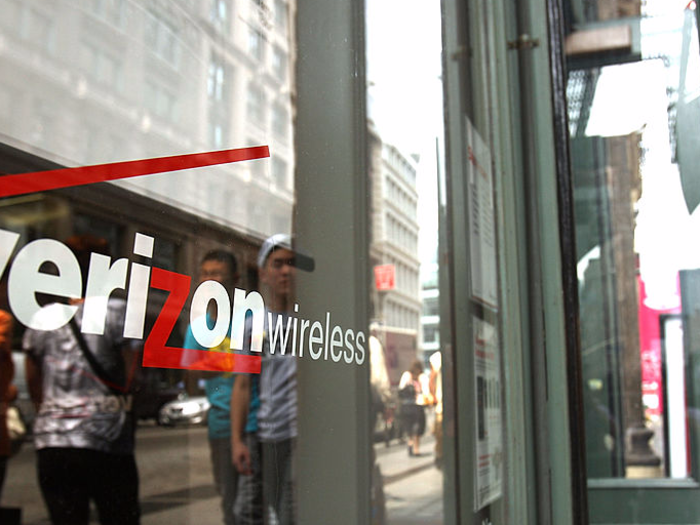
How about LTE mobile-hotspot data?
Verizon says Go Unlimited plan offers unlimited mobile-hotspot data, but not at fast LTE speeds. Instead, it’s constantly capped at a speed of 600 Kbps, which is closer to 3G-level quality.
The Beyond Unlimited plan, meanwhile, gives you up to 15 GB of genuine LTE mobile-hotspot data a month. If you use more than that, you’ll be bumped down to those slower 600 Kbps speeds. This is the one nice upgrade from the previous unlimited plan, which offered 10 GB of LTE mobile-hotspot data before throttling.
Any other details worth knowing?
Verizon still offers less-expensive, non-unlimited plans on its website. Those range from $35 a month for 2 GB of LTE data to $70 a month for 8 GB of LTE data.
Verizon also offers unlimited calling and texting from the US to Mexico and Canada, but only with the Beyond Unlimited plan. It allows data usage in those countries with that plan, too, but sticks you with glacially slow 2G speeds if you use more than 500 MB of data in a given day, which isn't a lot.
Both plans let you add a tablet to your plan for an extra $20 a month, but only the Beyond Unlimited plan lets you add a laptop for another $20 a month.
Verizon recently rolled out a loyalty rewards program of sorts called Verizon Up, which gives longtime customers credits that can be redeemed on various events and special offers.
T-Mobile

How much does it cost?
For T-Mobile's regular Unlimited plan, it's $70 a month for one line. Two lines costs $120 a month. For three lines, it's $140 a month. It's usually $160 a month for four lines, but T-Mobile is currently offering a deal of $140 for four lines for new customers.
Unlike Verizon, those rates do include additional taxes and fees, so what you see is what you pay.
You need to enroll in auto-pay billing to get these prices, though; otherwise, you'll pay $5 more a month per line.
T-Mobile has an opt-in feature called "Kickback" that's also worth noting. If any line on your plan uses 2 GB of data or less in a month, the carrier says it'll give up to $10 in credit back to you on your next bill. However, Kickback isn't available if you get T-Mobile's limited-time deal for four lines.
How much LTE data do you actually get?
T-Mobile says your line may be temporarily slowed in areas of congestion if you use more than 50 GB of LTE data in a month. That's a significant improvement over the 32 GB T-Mobile previously offered, which was already more than Verizon's offering.
Can you stream HD video?
No. Video streaming with the One plan is capped at a standard-definition, or 480p, resolution. And that includes the Netflix On Us option if you opt in. If you want HD today, including for Netflix, you need to pay $10 more a month per line for an upgraded plan called T-Mobile One Plus. This is the closest thing T-Mobile has to a genuine unlimited plan. Pay for that, and you can stream an unlimited amount in 720p HD.
T-Mobile (cont'd)
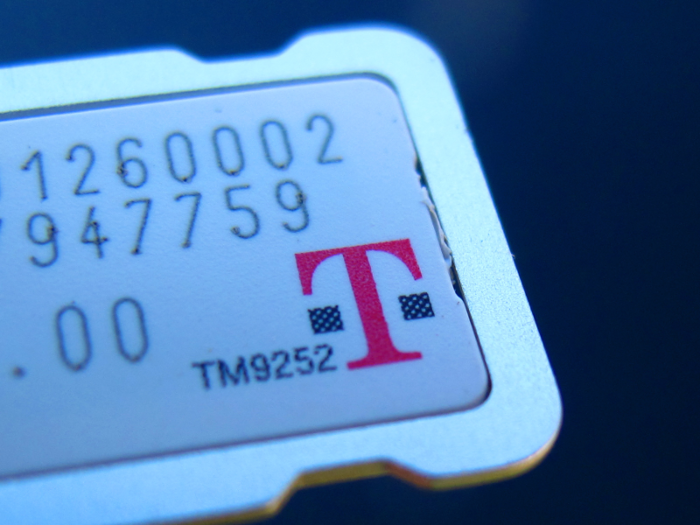
How about LTE mobile-hotspot data?
No. You can still use your phone as a hotspot, but your connection will be capped at slower 3G speeds.
If you want LTE mobile-hotspot data today, you have to pay $10 more a month per line for T-Mobile One Plus. That gives you 10 GB of LTE mobile-hotspot data; once that’s used up, you’re kicked back to 3G speeds.
If you want unlimited LTE mobile-hotspot data, you can pay $25 more a month per line for another upgraded plan called T-Mobile One Plus International.
Any other details worth knowing?
You can opt to get free standard two-screen Netflix worth $11 with T-Mobile's One plan that streams video at the standard 480p resolution. If you want to step up to the higher 720p HD resolution, you'll need to add the One Plus for an extra $10 per line a month, which is essentially the cost of a Netflix account. You can also get HD Netflix streaming with the One Plus International package for an extra $25 a month. It's also
While paying for the One Plus add-ons don't cover the cost of a Netflix account, they do have other benefits. The One Plus plan gives you unlimited WiFi through Gogo on flights to, from, or within the US (and on smartphones only), while the One Plus International plan gives you unlimited international calling to various countries.
All of the postpaid One plans let you use data internationally, but only at throttled speeds. International data with the base One plan maxes out at a paltry 128 Kbps; with the One Plus and One Plus International plans, that's doubled to a still-slow 256 Kbps.
You can add a tablet to your plan for another $20 a month, which includes up to 50GB of LTE data before a speed reduction. But hotspotting from the tablet is capped at 3G speeds, and video streams at the standard 480p resolution, which will be noticeably less sharp than HD resolution on a larger tablet screen.
You can also add a wearable for an extra $10 a month with unlimited talk, text, and 3G data.
Finally, T-Mobile recently introduced a separate "unlimited" plan for seniors called T-Mobile Unlimited 55+. It caps video at a 480p resolution and limited mobile-hotspot data to 3G speeds, so again, it's not really unlimited. But it still gives two lines a generous amount of LTE data for $60 a month in total, which is a pretty decent bargain. The catch, as you can guess, is that you have to be at least 55 years old to buy it (yes, really).
T-Mobile sells other, more affordable plans, but you have to call the carrier to activate them.
Sprint
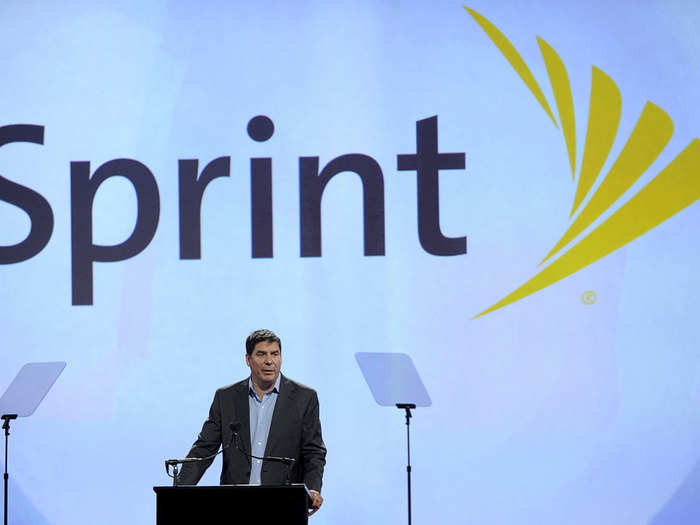
How much does it cost?
Before March 31, 2019: It's $60 a month for one line. Then, $100 a month for any multi-line plan. You can have up to five lines on a plan.
After March 31, 2019: It's still $60 a month for one line. Then, it's an extra $40 a month for the second line. If you have three to five lines, it's $30 per line a month.
None of those charges includes taxes or regulatory fees. Those vary by region, so your bill will be a bit higher than what's advertised.
Sprint says these promotional prices are for new customers. You also need to enroll in auto-pay to get these rates; otherwise, each line costs another $5 a month.
How much LTE data do you actually get?
Sprint says your line may be temporarily slowed in areas of congestion if you use more than 23 GB of LTE data in a month.
Can you stream HD video?
Yes. Sprint says you can stream video up to a 1080p resolution, which is plenty sharp. And that includes the free Hulu Limited Commercials plan that's included with Sprint's Unlimited Freedom plan for new customers.
If you signed up for Sprint’s unlimited plan prior to February 17, 2017, however, your video streams are capped at a non-HD, 480p resolution. You’ll have to switch over to the since-updated unlimited plan to get the HD upgrade.
Sprint (cont'd)
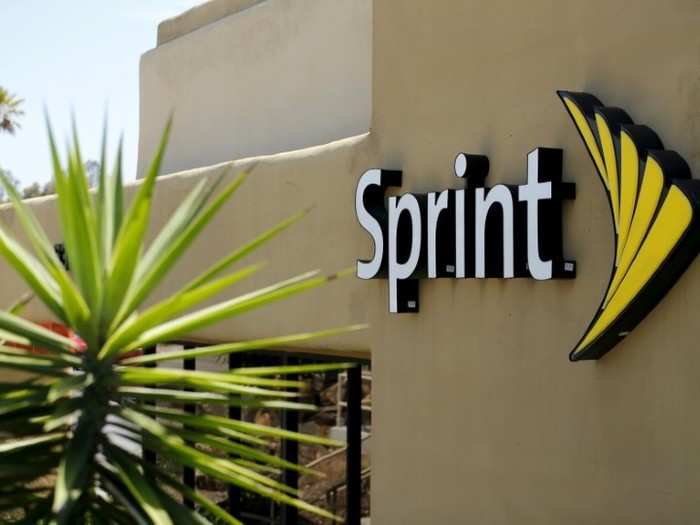
How about LTE mobile-hotspot data?
Yes. You get 10 GB of LTE mobile-hotspot data per line each month. If you use more than that, however, Sprint says your mobile-hotspot speeds will capped at 2G speeds, which are nigh-unusable.
Also, if you signed up to Sprint’s unlimited plan prior to these recent changes, your data allotment is lower, and you’ll have to upgrade to get the same amount as newer customers.
Any other details worth knowing?
New Unlimited Freedom customers get a free Hulu Limited Commercials plan included with their carrier plan. Current customers can still get free Hulu, but they won't get Hulu Live TV, the Hulu No Commercials plan, or Hulu Premium Add-ons.
Sprint throttles your speeds for gaming and streaming music over a mobile connection. For the former, you’re maxed at 8 Mbps; for the latter, you’re maxed at 1.5 Mbps. Those speeds should be fine for most users.
Sprint offers more affordable plans, but, like most of its peers, pushes customers to choose an unlimited one.
AT&T
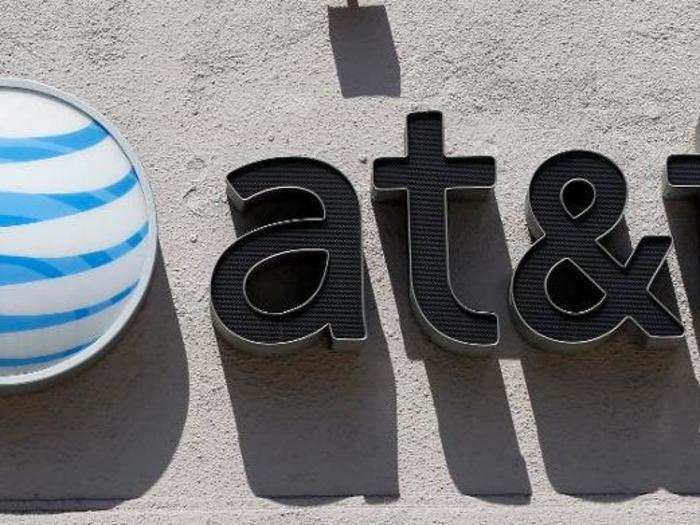
How much does it cost?
AT&T markets two "unlimited" plans — Unlimited Plus and Unlimited Choice. Only Unlimited Plus is anywhere close to being worthy of the name, though.
Unlimited Plus: $90 a month for one line. $145 a month for two lines. $165 a month for three lines. $185 a month for four lines. Then another $20 a month per line for lines five through ten.
Unlimited Choice: $60 a month for one line. $115 a month for two lines. $135 a month for three lines. $155 a month for four lines. Lines five through ten cost $20 a month per line.
None of these prices include taxes or regulatory fees. Those vary by region, so your bill will be a bit higher than what's advertised.
You also need to enroll in auto-pay to get these rates. Otherwise, you'll pay $5 a month more for a single line or $10 a month more for each line on a multi-line plan.
How much LTE data do you actually get?
AT&T says your line may be temporarily slowed in areas of congestion if you use more than 22 GB of LTE data in a month.
With the Unlimited Choice plan, though, everything you do is capped at 3 Mbps. That's far too slow to be considered true LTE, and should make the plan a non-starter compared to everything else here.
Can you stream HD video?
Yes, with the Unlimited Plus plan. AT&T keeps you at a 480p resolution by default, but it doesn't hold you to that. You can get a better picture by turning off its Stream Saver option on your account page.
With the Unlimited Choice plan, video streams are capped at 1.5 Mbps, which AT&T says is “about 480p.” Again, that’s not really unlimited.
AT&T (cont'd)
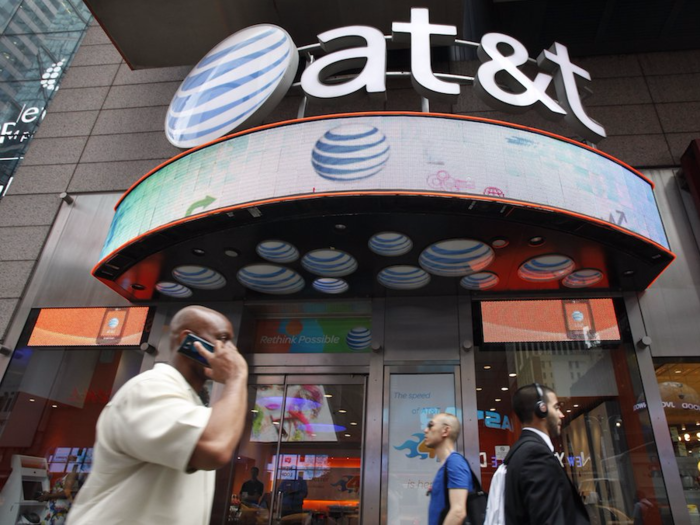
How about LTE mobile-hotspot data?
Yes, with the Unlimited Plus plan. With that, you get 10 GB of LTE mobile-hotspot data per line each month. AT&T says mobile-hotspot speeds will be reduced to slower 3G speeds (128 Kbps) once you exceed that amount.
The Unlimited Choice plan does not include mobile-hotspot data.
Any other details worth knowing?
AT&T includes a couple of fantastic perks with its plans (although they do raise questions of fair competition). One is a free subscription to HBO, either through its own DirecTV, U-Verse, or DirecTV Now services, or through the HBO Go app. AT&T says it applies a credit for this within two billing cycles. This perk only applies to the Unlimited Plus plan, though.
Just know that if you don’t want DirecTV, taking advantage of the offer can be a bit tricky. You have to first set up a special free DirecTV Now account, which you then use to log into HBO Go.
The other perk is a $15 a month discount on service from DirecTV or DirecTV Now. That would drop the price of the entry-level DirecTV Now service from $35 monthly to $20 a month. AT&T says it will apply the credit within three billing cycles. If you use the Unlimited Choice plan, you only get the discount for DirecTV Now, not standard DirecTV.
You can add up to two tablets to AT&T's unlimited plans for $20 a month, but only with a single line plan. A wearable for $10 a month, also with a single line plan.
AT&T does still offer other plans, but, like most of its peers, requires you to call to sign up for them.
So which should I buy?

As always, it depends. But given T-Mobile's improved network and lack of tacked-on monthly taxes and fees, the company's One Plus plan looks like the best deal in a vacuum. The base One plan would be tops, but its lack of HD video and LTE hotspot data are legitimate downgrades.
AT&T's Unlimited Plus plan is the priciest to start, and AT&T’s network generally trails that of Verizon. Still, it's not terribly far off, and the plan costs at least $15 less than Verizon's Beyond Unlimited plan each month if you add multiple lines. The HBO and DirecTV discounts are undeniably nice perks, too.
Verizon’s unlimited plans may make things easier on its network, but they’re tougher sells for consumers compared to its old offering. Still, Verizon’s LTE network is generally seen as the fastest and farthest-reaching of the bunch, which’ll likely make its Beyond Unlimited plan worth it for those who have few other options. But the lack of 1080p video is tough to swallow. (The Go Unlimited plan is a non-starter for those who value having any HD video at all.)
If you just want the cheapest unlimited plan, there's Sprint, but its network coverage has lagged the competition for years. If you're in an area where coverage isn't awful, though, it's worth a look. Getting up to five lines for $90 a month is a superb bargain, relatively speaking.
Popular Right Now
Popular Keywords
- India’s wearables market decline
- Vivo V40 Pro vs OnePlus 12R
- Nothing Phone (2a) Plus vs OnePlus Nord 4
- Upcoming smartphones launching in August
- Nothing Phone (2a) review
- Current Location in Google
- Hide Whatsapp Messages
- Phone is hacked or not
- Whatsapp Deleted Messages
- Download photos from Whatsapp
- Instagram Messages
- How to lock facebook profile
- Android 14
- Unfollowed on Instagram
Advertisement